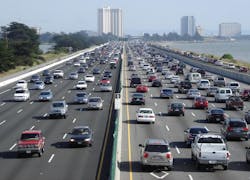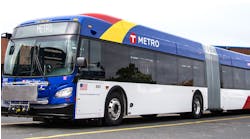A new report released by the Southern California Association of Governments and the UCLA Institute of Transportation Studies found a dramatic increase in private automobile ownership in Southern California is the main cause of an overall decline in transit ridership.
The report, “Falling Transit Ridership: California and Southern California,” was commissioned by the Southern California Association of Governments (SCAG) to identify the causes of transit ridership declines in the region, which are part of an overall nationwide trend.
Authored by faculty at the UCLA Institute of Transportation Studies, this new study found that the six-county SCAG region added 2.1 million household vehicles between the years 2000 and 2015, a car increase that nearly quadruples the rate of the preceding decade. The number of vehicles added nearly matches the growth in population during those years.
“This absolutely has had a tremendous impact on congestion,” said Hasan Ikhrata, executive director of SCAG. “Last year, drivers in L.A. County spent over 100 hours stuck in traffic as a result. Think about the effect that 2 million more cars has had on air pollution, not to mention the wear and tear on our roads.”
The study also considered factors including transit service quality, fuel prices, neighborhood change and the rise of ride-hailing services like Uber and Lyft, but found that the region’s higher number of cars was the root of transit ridership’s downward trend. Vehicle ownership was also shown to have risen among demographic groups that have traditionally been the highest users of transit, including low-income and foreign-born immigrants.
“Transit providers in the region are facing an uphill battle, because so many of our current policies incentivize driving,” said study co-author Michael Manville, a professor at UCLA’s Department of Urban Planning and Institute of Transportation Studies. “We need to plan not just for the transit-dependent, but also focus on making transit an appealing option for riders who have a mobility choice.”
As the metropolitan planning organization responsible for assessing long-term needs and charting transportation policies for the region, SCAG has identified building more housing near high quality transit as a key strategy in meeting our region’s greenhouse gas emission reduction goals, as well as addressing the region’s growing housing affordability crisis. SCAG estimates that approximately 1,000,000 units of housing are needed in Los Angeles County alone.
“We need more affordable housing, period. But we also need intentional, incentivized development of affordable housing in proximity to transit to expand options for people,” said Ann Sewill, Vice President of Health and Housing at the California Community Foundation. “Cities have been planning for these two vital needs separately and unfortunately that practice will continue to harm our air quality, our public health and the benefits of our investments."
“We cannot view the results from the study as glass-half-empty. As the older adult population rises, the need for greater transit access and mobility options will only become more urgent," said Stephanie Ramirez, Associate State Director for AARP California.
The full report is available in SCAG’s online document library at http://www.scag.ca.gov/Documents/ITS_SCAG_Transit_Ridership.pdf




